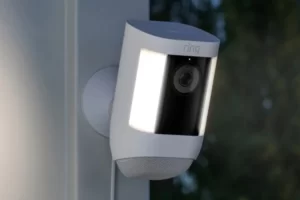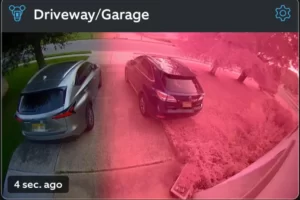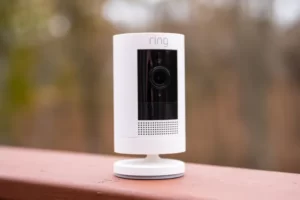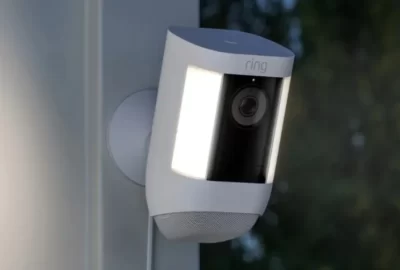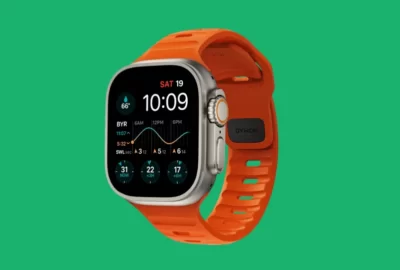Do Mirrorless Cameras Have a Mechanical Shutter?
Mirrorless cameras are increasingly popular with amateur and professional photographers alike. We are all familiar with the sound of the camera shutter. But do you know what happens inside your device when this happens? Why do mirrorless cameras have mechanical shutters? With mirrorless and SLR cameras, photos taken with the mechanical shutter function benefit from the effect of total instant exposure, rather than the progressive exposure (rolling shutter) used by the electronic shutter. In this article, we’ll explain how the shutter works and why you’ll hear this distinctive click.
What Is a Camera Shutter?
First, let’s define what a shutter is and what it does. You can think of it as a door that opens to let light into the sensor or film, and then closes to stop the exposure.
In reality, the shutter is a complex mechanical device. It’s not just a simple door that opens and closes. Depending on the camera, there are different types of shutters. Let’s look at shutters in DSLRs, mirrorless cameras, video cameras, and cine cameras.
How a Mirrorless Camera Works with a Mechanical Shutter
As you know, mirrorless cameras revolutionized the world of photography when they entered the scene as lightweight cameras.
When looking at the structural differences between DSLRs and mirrorless cameras, it’s clear that mirrorless cameras cut out most of the bulk, safe space, and moving parts required in mirrored cameras — mirrorless cameras cut out if you will “Intermediate Mirror”.
So we have reason to wonder why the company would add a physical feature to this camera with an electronic viewfinder and, in many cases, an electronic shutter
How Do Mechanical Shutters Work?

There are two types of camera shutters on mirrorless cameras, the mechanical shutter and the electronic shutter. Traditionally, camera shutters have been mechanical, and the familiar camera noise comes from this system.
- Mechanical SLR Shutter
In order to understand why a mirrorless camera uses a mechanical shutter, it is first necessary to understand how the shutter system in an SLR camera works, as this is where it was adapted. SLR cameras use a mirror box that allows the photographer to see the precise image captured on the electronic sensor. The electronic sensing unit is located behind the mirror box, so it needs to be removed in order to capture the image.
After pressing the shutter button, the mirror box flips up, avoiding the sensor. This is also why the view through the viewfinder goes black. Once the mirror box is flipped up, the sensor covered by the shutter is revealed. The shutter will then move from top to bottom, exposing the sensor and allowing the light to shine.
After the allotted time, the second shutter will move from the top of the sensor to the bottom, bringing it back. The mirror box will then flip down and the two shutter doors will reset, ready to take another image.
- Mechanical mirrorless blinds
As the name suggests, mirrorless cameras don’t have a mirror box or pentaprism to cast light into the viewfinder. Instead, mirrorless cameras use an electronic viewfinder or LCD screen to show you the image you want to capture.
The sensor of a mirrorless camera is actually continuously exposed to the light passing through the camera, however, the image is not “saved” until the shutter button is pressed. Before that, the camera recorded the light hitting the sensor so that photographers could see the image they were about to capture through the electronic viewfinder or LCD screen.
When the shutter button is pressed, the shutter door rises from bottom to top and covers the sensor. Now the sensor will start exposing (or saving/taking an image) and the shutter moves down. This allows the sensor to record and save the light before the second shutter door is moved from top to bottom to resume the sensor, thus stopping the exposure (or saving). Finally, the door will reset, ready to capture another image.
The Benefits of Mechanical Shutters
Better synchronization with flash – mechanical shutters tend to allow you to operate flash at higher speeds than electronic shutters.
- Reduce noise in shutterless cameras
- Reduce rolling shutter distortion – Rolling shutters (a type of electronic shutter) often cause lateral distortion of the image, especially when the camera is panning quickly or objects are moving.
- They handle flickering light sources better than electronic shutters
Disadvantages of Using A Mechanical Shutter
Reduce the top shutter speed – the mechanical nature of this type of shutter means that the maximum speed is usually lower than that of an electronic shutter
- They have a lifespan – since mechanical shutters have moving parts, these are obviously prone to wear and tear and may stop working overtime. Most cameras with a mechanical shutter system will have a “shutter count,” or the number of times the shutter can be used before it can malfunction.
- Camera Shake – Movement of the shutter door and mirror box can cause a slight camera shake, although built-in image stabilization helps reduce this.
- Response Time – Also due to the mechanical nature of the shutter, there may be a slight delay between pressing the shutter button and the camera taking a picture.
How to Use the Mechanical Shutter Function
It’s easy to click, but experts in any field know that the right knowledge and application of the device of your choice will ensure you perfect the deal.
If you’re hesitant to try the mechanical shutter feature, here’s an opportunity to make you more comfortable in unfamiliar territory. This way, if you like the electronic shutter, you can say goodbye to your one-trick pony use and become a more well-rounded photographer.
Here’s a brief review of the settings for which a mechanical shutter works: Freeze fast-moving objects in time, produce even lighting, and reduce the rolling shutter effect.
Now, based on these requirements, let’s take a look at a few types of photography for which the mechanical shutter is best suited.
Which Kind of Shutter Should I Use with My Mirrorless Camera?
There are many cameras out there that let you decide whether to use a mechanical shutter, an electronic shutter, or a hybrid shutter to capture your images. Some cameras even let you leave it to the camera microprocessor if you set it to automatic mode. However, if you want to get the most out of your photography, it won’t hurt to have a basic understanding of which type of shutter is best for which type of photography.
- landscape photography
A fully electronic shutter setting is an excellent choice for landscape shots. However, if you find there’s a fair amount of artificial light or fast-moving objects, like wildlife, then it’s best to switch to a mechanical shutter (or EFC). Since the electronic shutter can sometimes prevent the use of certain features, such as long-exposure noise reduction, it’s best to switch to the mechanical shutter in low light conditions
- portrait photography
By default, the portrait fits the mechanical shutter setting. This is especially true if you use flash. However, if you’re shooting outdoors, there’s a risk of overexposure, and it’s best to switch to an electronic shutter if your shutter speed allows it.
- Sports, Wildlife, and Marco
To avoid rolling shutter problems and eliminate bundling, opt for a mechanical shutter for this type of photography.
- documentary photography
The electronic shutter is best for this type of photography, as it allows you to shoot quietly. However, if you’re indoors, switching to mechanical blinds may work best.
Conclusion: Do Mirrorless Cameras Have a Mechanical Shutter
It’s always a good idea to understand how a camera works. For example, understanding the mechanics of the shutter allows you to see its capabilities and limitations.
Let’s be honest: When you hear a click, it feels good to know what’s going on inside your device.


